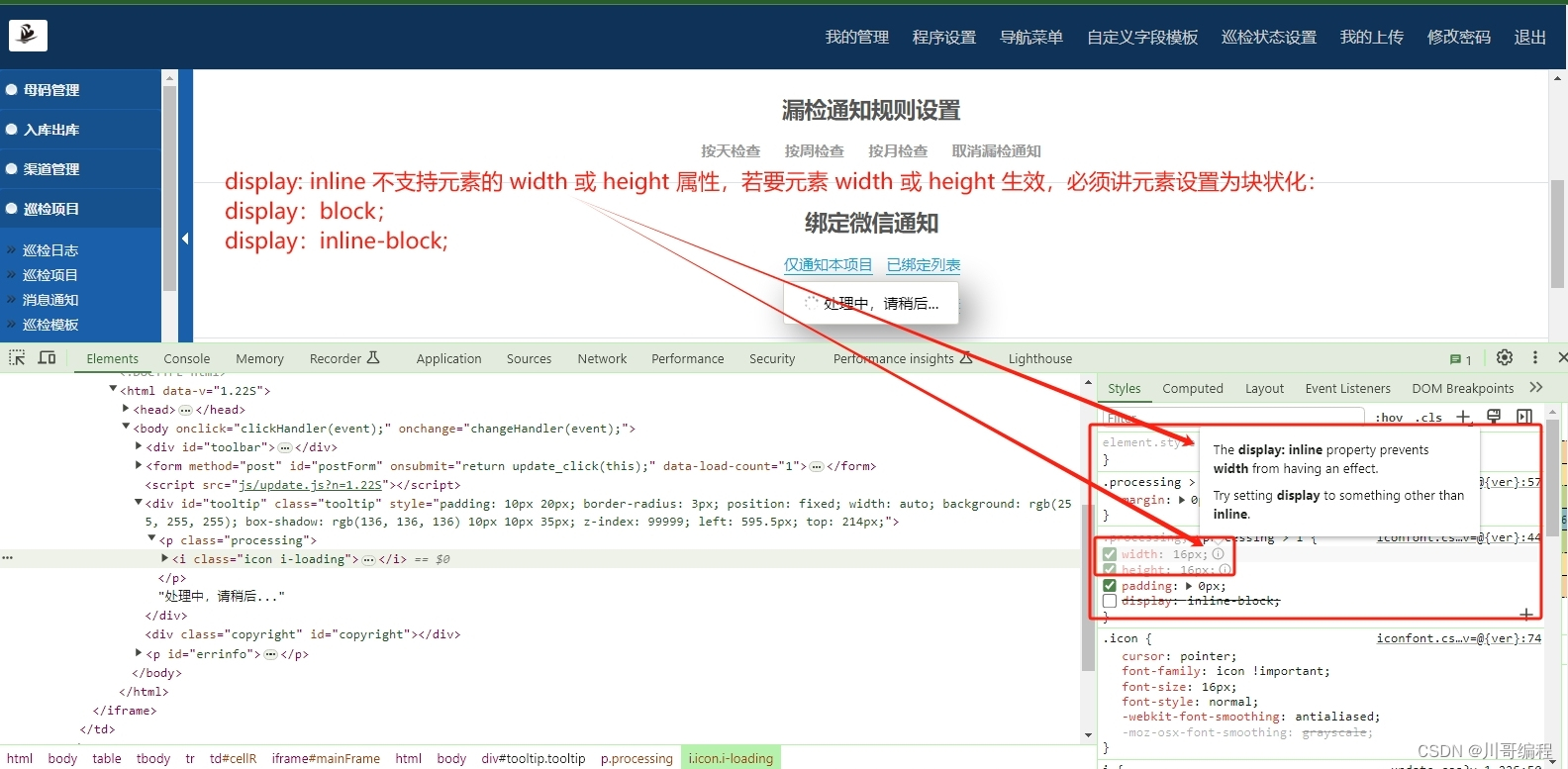The display: inline property prevents width from having an effect.
Try setting display to something other than inline.
----------------------------------
display: inline 不支持元素的 width 或 height 属性,若要元素 width 或 height 生效,必须讲元素设置为块状化:
display:block;
display:inline-block;





















 2631
2631











 被折叠的 条评论
为什么被折叠?
被折叠的 条评论
为什么被折叠?








